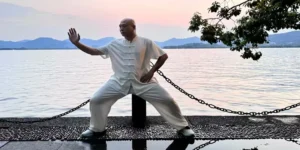Can Zhuan Zhuang really provide exercise? How to do Zhuan Zhuang?
Zhan Zhuang adjusts your body from the bottom up, combined with meditation and inner peace, to enter a state of mind and get its best benefits. For example, Zhan Zhuang can unclog meridians, harmonize qi and blood, strengthen organ, liver, and cell functions, and also strengthen the body and increase strength.
Zhan Zhuang seems simple, but it actually holds profound benefits. It doesn’t require any equipment or exercise. All it requires is your body and a determined heart. Persist for half an hour daily, and over time, you’ll see changes in your qi and blood, mental state, and physical condition, achieving the effects of strengthening, toning, nourishing, and protecting your body!
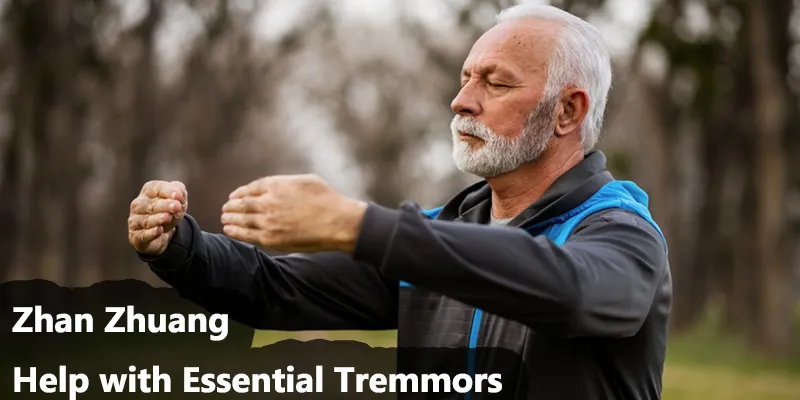
This article shows Zhan Zhuang’s potential to alleviate essential tremors. Crucially, we address how correct form activates the body’s self-regulatory mechanisms to reduce involuntary shaking.
What Is Zhan Zhuang?
Zhan Zhuang translates to “standing like a tree” or “standing post.” It is the basis of internal martial arts like Tai Chi and Xingyiquan.
Rooted in Taoist and Traditional Chinese Medicine principles, Zhan Zhuang embodies wu wei. It cultivates stillness to harmonize yin and yang, balancing the body’s vital energy and blood flow.
Modern research proves Zhan Zhuang is a neuromuscular reeducation tool. Zhan zhuang practitioners need to hold static postures; it lowers sympathetic nervous system dominance while activating the parasympathetic system. This reduces cortisol and enhances the body’s sense of position and movement.
Zhan Zhuang is “meditation in motionless motion.” It integrates three pillars: jing, song, and yi. Practitioners maintain alert stillness, directing awareness inward to detect and release stress.
How Does Zhan Zhuang Help With Essential Tremors?
Essential tremor is rhythmic shaking in hands, head, or voice due to cerebellar-thalamic circuit dysfunction. Zhan Zhuang solves this via three methods.
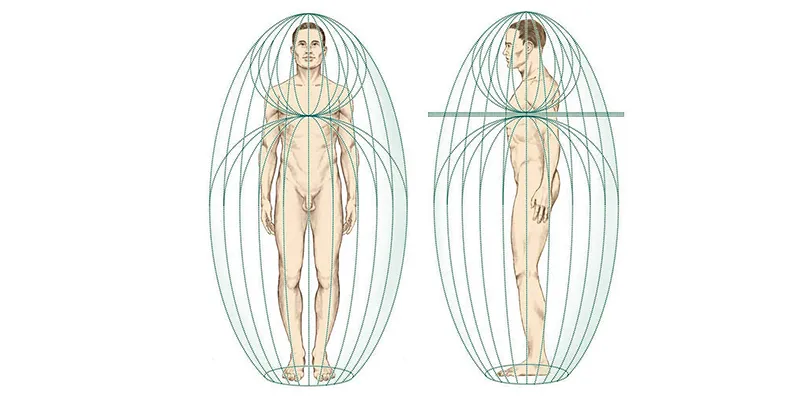
Neurological Repatterning
Holding standing postures trains the cerebellum’s error-correction function. This dampens erratic signals from the thalamus, reducing tremor amplitude. Studies show static stance practice improves sensorimotor integration in 8–12 weeks.
Stress Modulation
Essential tremors worsen under stress. Zhan Zhuang’s parasympathetic activation lowers adrenaline spikes. Cortisol reduction minimizes neuromuscular “noise,” stabilizing motor control.
Muscle-Tendon Reinforcement
Essential tremors weaken antagonistic muscle coordination. Zhan Zhuang builds isometric strength in deep stabilizers like the psoas and rotator cuff. This creates a “scaffolding effect,” absorbing tremors through structural integrity.
Changes During Zhan Zhuang
Physical Changes: Initially, heat builds in hands/feet as circulation improves. Subtle vibrations signal tension release. Over months, posture corrects: the spine elongates, scapulae depress, and joints gain fluid stability. Tremor patients report reduced shaking frequency post-practice.
Psychological Changes: Mental chatter slows, replaced by somatic awareness. Beginners endure frustration (“Why can’t I stand still?”). Advanced practitioners enter a flow state—thoughts dissolve into proprioceptive feedback. ET sufferers note decreased anxiety about tremors, fostering emotional resilience.
Benefits of Zhan Zhuang
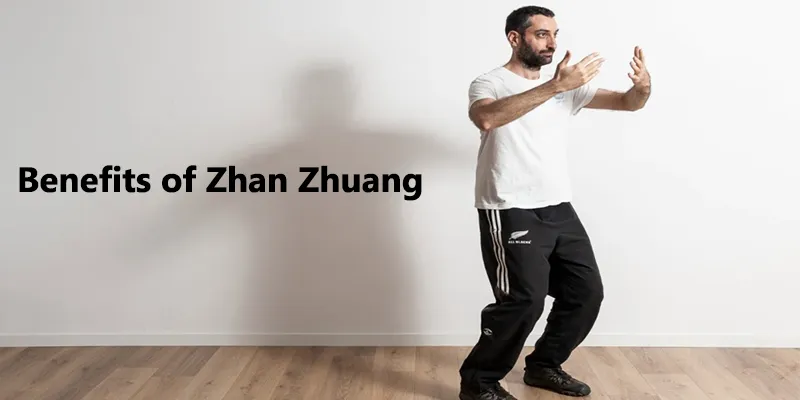
Physical Exercise:
Zhan Zhuang seems simple, but it strengthens your whole body muscles. During this practice, the leg muscles must continuously force to maintain stability, just like tree roots deep in the ground. Zhan Zhuang strengthens your leg muscles, increasing the body’s overall support capacity. Furthermore, the posture strengthens the waist and abdomen, strengthens the core muscles, and improves balance and coordination. With regular Zhan Zhuang practice, your body will become lighter and more agile, and it will not be easy to feel tired.
Improves Qi and Blood
From a Traditional Chinese Medicine perspective, Zhuan Zhuang meditation is a highly effective way to promote Qi and blood circulation. While doing this, the body enters a relative stillness yet brims with an internal energy state. This helps open your body’s meridians, allowing Qi and blood to flow freely. When qi and blood can flow smoothly throughout the body, many health issues are solved. For example, for those with cold hands and feet, zhan zhuang can direct Qi and blood to your hands and feet, gradually improving circulation and warming them up. Furthermore, healthy Qi and blood circulation promote the normal functioning of various organs, increase metabolism, and contribute to better health.
Stress Relief
Modern life often leaves us feeling strained and overwhelmed. Standing meditation is the key to unlocking your inner self. During this practice, one focuses attention on their body and breathing. With steady, deep breathing, one gets a deeper sense of peace. This deep relaxation can relieve stress and reduce anxiety and depression. Afterward, one feels as if waking from a deep sleep, their mind clear and their spirit invigorated.
Self-Repair
Human body possesses a powerful self-repairing capacity, and standing meditation is a way to stimulate this ability. When you practice Zhan Zhuang, your body enters a self-regulation state. In this state, it mobilizes its own energy to repair damaged cells and tissues. Some patients with chronic illnesses experience relief or even the disappearance of their symptoms after practicing standing meditation. This is because Zhan Zhuang enhances your body’s overall performance, allowing the body’s self-repair system to function more effectively.
How to Practice: The 5 Zhan Zhuang Postures
Wuji Stance
Feet shoulder-width, knees slightly bent, arms loose at sides.
The entry posture. Focus: Rooting feet, relaxing shoulders. Builds basic alignment.
Chengbao Zhuang
Arms curved as if embracing a tree, palms facing chest.
Core Zhan Zhuang posture. Engages dantian (lower abdomen). Develops thoracic stability.
Tuo Qiu Zhuang
Palms upturned at navel level, as if supporting a ball.
Strengthens wrist extensors. Ideal for hand tremor rehab.
Hugging Tiger Stance
Arms wider, palms facing inward as if gripping a barrel.
Enhances scapular retraction. Corrects forward-head posture.
Resting Posture
Palms resting on lower abdomen, elbows slightly bent.
A recovery stance. Integrates breath with movement intent.
How To Do Zhan Zhuang (5 Postures)
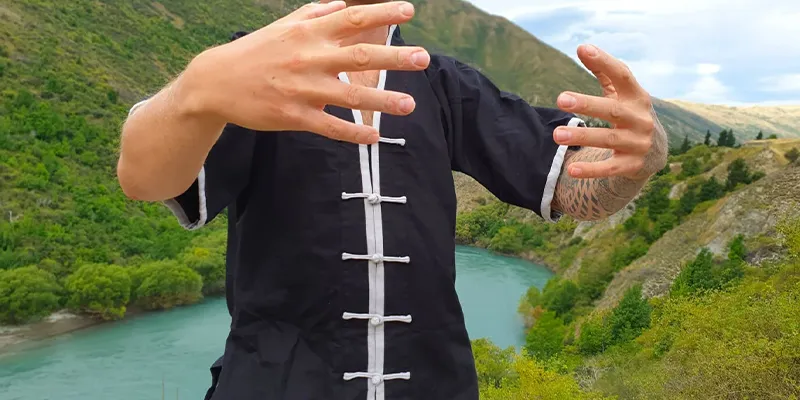
Zhan Zhuang 1st Posture: Stand with your feet hip-width apart, heels about two feet apart. Point your left toe forward, with your toes pointing southwest. Raise your palms, palms facing each other, in front of you, shoulder-width apart. Bend your knees and squat.
Zhan Zhuang 2nd Posture: Gradually rotate leftward, using your waist and hips as the axis, shifting your center of gravity toward your left leg, forming a left-solid-right stance. Keep your right foot on the ground. Using your middle fingers as the axis, simultaneously turn your palms so that your right palm faces up and your left palm faces down. Stop when your body is in a straight line with your knees and toes.
Zhan Zhuang 3rd Posture: Push off the ground with your left foot, using your waist and hips as the axis, gradually rotate rightward, shifting your center of gravity toward your right leg, forming a right-bow-left-arrow stance. Simultaneously, rotate your palms using your middle fingers as the axis so that your left palm faces up and your right palm faces down. Stop when your body is in a straight line with your nose, knees, and toes.
Zhan Zhuang 4th Posture: Push off the ground with your right foot and turn your body to the left, similar to the 2nd Posture.
Zhan Zhuang 5th Posture: To finish the exercise, when in position 3, turn your body to the left, centering your weight between your legs. Turn your palms so that they face each other. Pivot your right heel with your toes facing forward. Bend your elbows, keep your fingers together, and bring your palms parallel to your chest. Slowly press down to your lower abdomen. Let your hands hang down at your sides while standing with your feet shoulder-width apart. Stand still for 2-3 minutes before finishing the exercise.
Notes on Zhan Zhuang
- After practicing, wipe away any sweat, especially from the Dazhui area at the back of your neck. Avoid showering immediately in the summer.
- Avoid practicing Zhan Zhuang under a fan or in an air-conditioned room, as this can easily lead to catching a cold. Zhan Zhuang in a natural environment with fresh air and no drafts is most effective.
- It’s also best not to urinate or defecate within half an hour of practicing. It’s best to drink water and have bowel movements before the actual practice.
- Beginners should avoid practicing when it’s windy, rainy, or thundering.
- People with heart disease should avoid excessive practice.
Zhan Zhuang Common Errors
Hyperextended knees strain ligaments; trembling intensifies.
Tensing shoulders/neck heightens sympathetic tone, worsening tremors.
Chest breathing triggers anxiety, destabilizing posture.
Slouching or overarching compresses vertebrae.
Incorrect zhan zhuang practice worsens ET symptoms. Muscle fatigue causes compensatory shaking. Chronic misalignment may cause tendinitis or nerve impingement. You always need to consult a certified instructor.
Beginner’s Guide to Zhan Zhuang
Week 1: Practice Wuji Zhuang 3–5 minutes daily.
Week 2: Add Chengbao Zhuang, 2 sets of 3 minutes.
Week 3: Integrate breath—4-second inhale, 6-second exhale.
Beginners accept burning thighs and tremor discomfort. Observe sensations without judgment. Expect leg shaking, heat flashes, or emotional releases. These indicate nervous system adaptation. Persist through boredom—neuroplastic changes begin subtly.
Tremors During Zhan Zhuang: How To Do
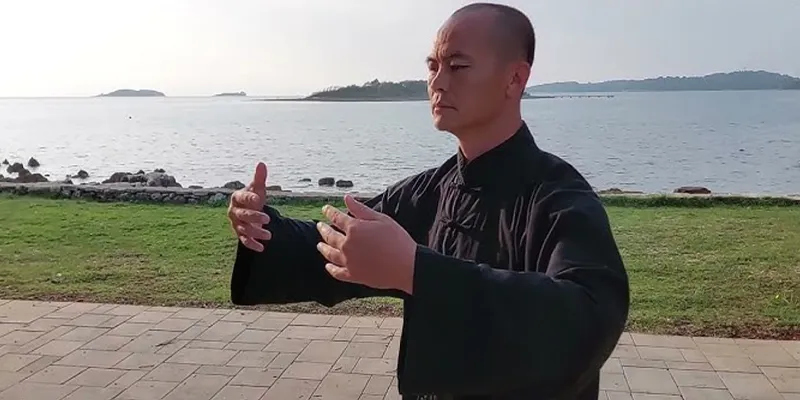
Step 1: Immediate Adjustments
- If legs shake: Widen stance 2-3 inches, and bend knees slightly deeper.
- Weight shift: Rock gently heel-to-toe 3 times to reset grounding.
- If hands tremble: Lower elbow height by 2 inches.
- Modify posture: Switch from arms at chest to palms facing down near hips.
Step 2: Breath Control
- Inhale softly through nose (4 sec) → exhale slowly through mouth (6-8 sec).
- On exhale, mentally direct breath to trembling area; never hold breath—it triggers sympathetic panic.
Step 3: Mental Reframing
“Tremors are my nerves rewiring.””My feet are steady. My spine is tall.”
Step 4: Strategic Posture Modifications
- For Severe Tremors: Sit on stool edge, feet flat, arms in Fu An Zhuang. Maintain spinal alignment.
- Wall Support: Stand with sacrum lightly touching wall—reduces balance anxiety.
Step 5: When to Pause or Stop
- Continue if tremors feel “warm” or “flowing.” Shaking decreases after 2-3 breath cycles.
- Stop if: Pain beyond 3/10 intensity.
- Dizziness or panic arises.
- Tremors spread violently (e.g., neck to limbs).
Frequently Asked Questions
Is Zhan Zhuang time-sensitive?
Zhan Zhuang can be practiced without a specific time commitment. Modern people are busy with work and social engagements, making it difficult to find much free time. However, even if you can spare at least 5 minutes to practice standing practice, you will reap the rewards.
Do I need a suitable location for Zhan Zhuang?
Zhan Zhuang doesn’t require a large space or equipment. All you need is a small, quiet area with enough space for your feet.
Who is suitable for zhan zhuang?
It’s suitable for practitioners of all ages, from 10 to 100 years old, and anyone with no experience can learn.
How to pronounce zhan zhuang?
“Jahn Jwahng” (Zhan). “Zhan” (Zhan) rhymes with “ton” (ton); “Zhuang” (Zhuang) is similar to “swan” (swan) + “g” (without the hard “g”).
Is zhan zhuang enough exercise?
It complements aerobic/strength training but enhances unique neural resilience. For older adults/ET patients, this may constitute primary exercise if practiced ≥30 minutes per day.

